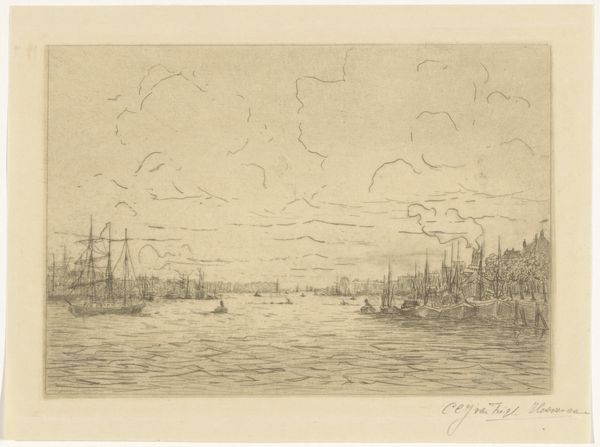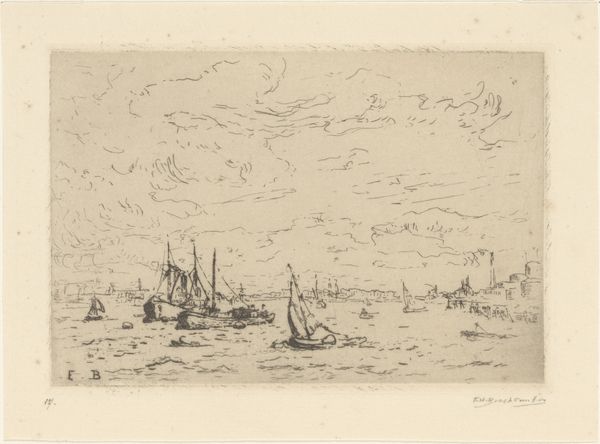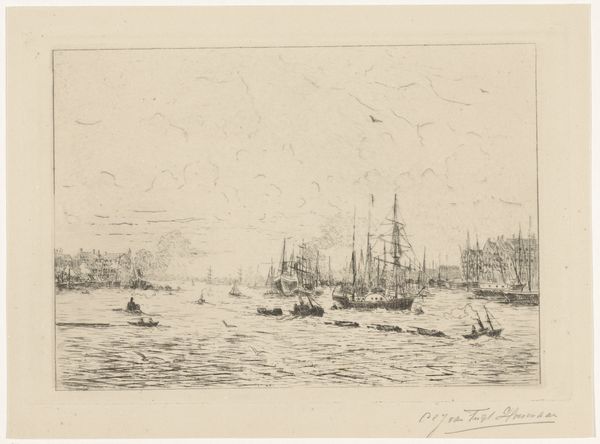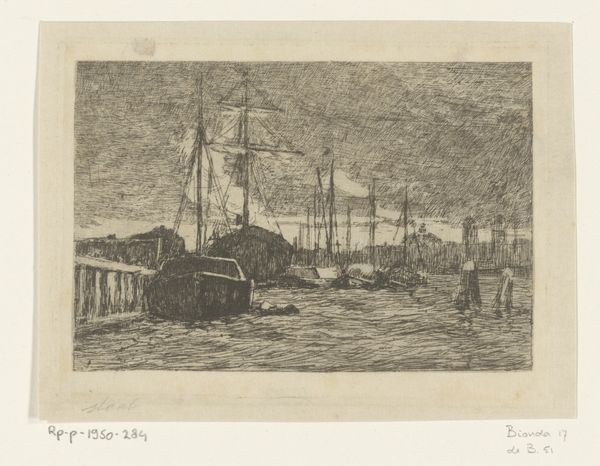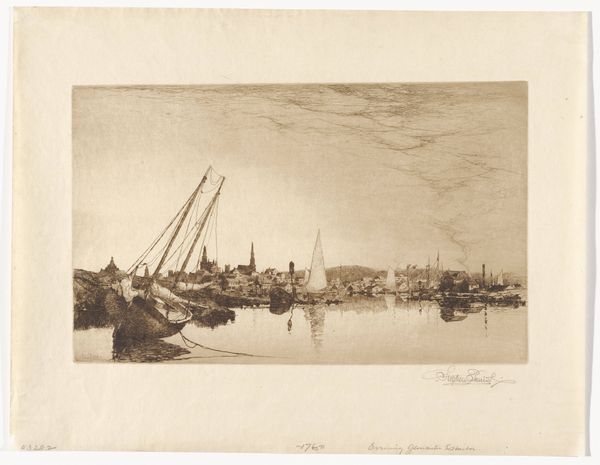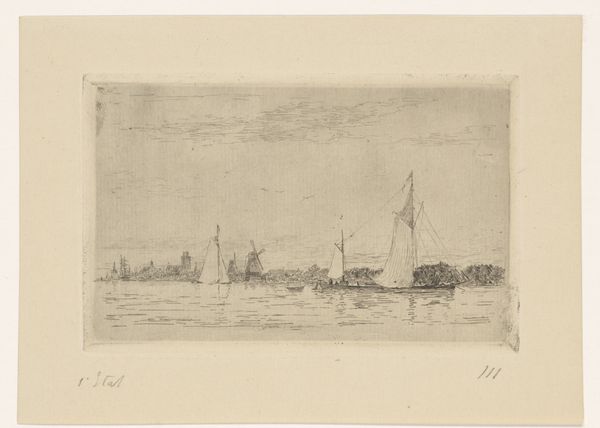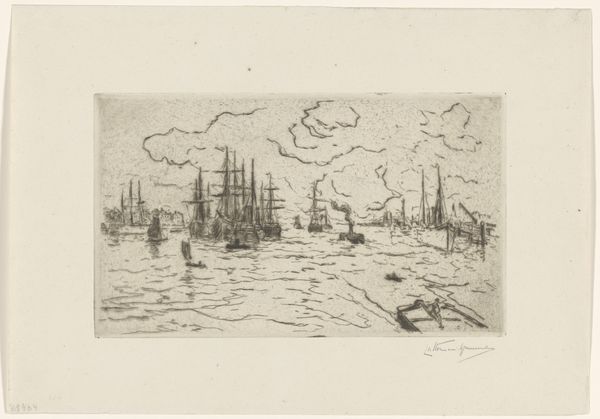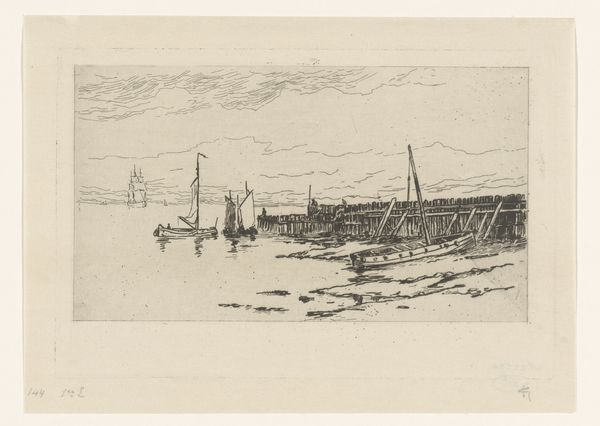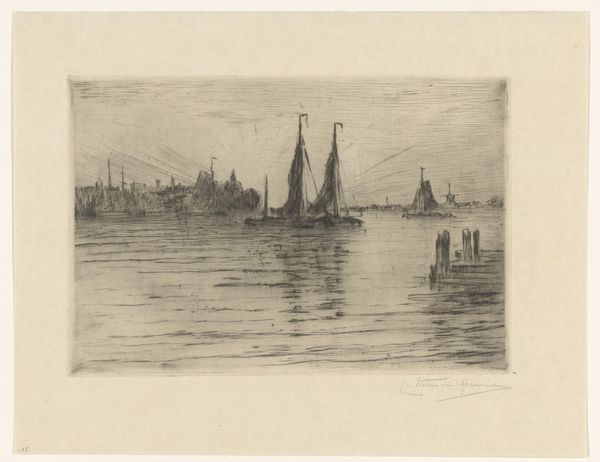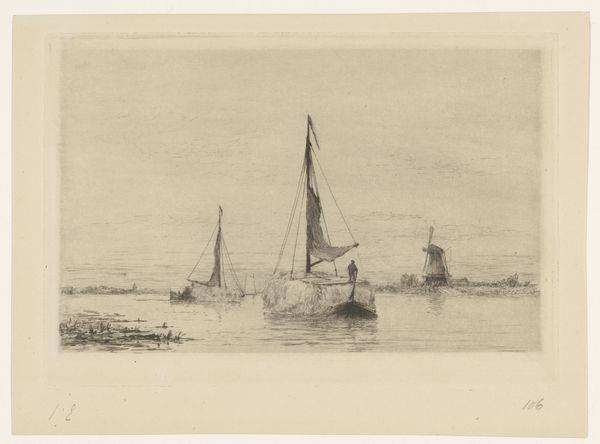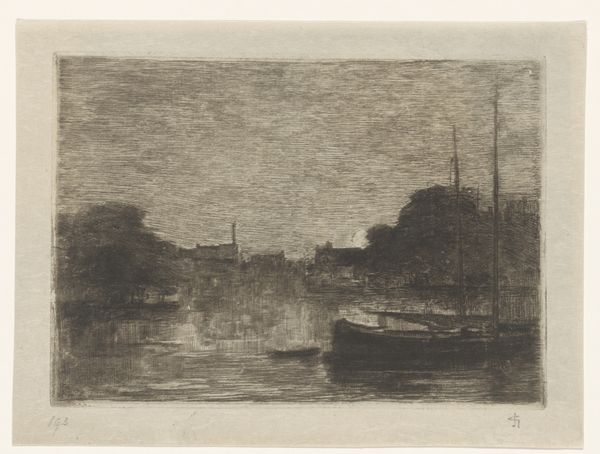
Gezicht op de Maas met sleepboten 1864 - 1909
0:00
0:00
corneliachristinajohannavantrigthoevenaar
Rijksmuseum
drawing, print, etching, ink
#
drawing
# print
#
etching
#
landscape
#
etching
#
ink
#
cityscape
#
realism
Dimensions: height 140 mm, width 198 mm
Copyright: Rijks Museum: Open Domain
Editor: Here we have Cornelia Christina Johanna van Trigt-Hoevenaar's etching, "Gezicht op de Maas met sleepboten," created sometime between 1864 and 1909. It depicts a busy scene on the Maas river, filled with boats and industry. It feels like a very specific snapshot of a moment in time. What stands out to you about this piece? Curator: It’s fascinating how van Trigt-Hoevenaar captures this bustling scene. What you’re seeing isn't just a landscape, but a portrait of Rotterdam's industrial rise, a moment when the city's port was becoming a vital hub. Notice how the smoke stacks are prominent, almost celebrated, elements? This wasn’t merely documenting the landscape; it was showcasing progress, framing industrial activity as integral to the city's identity. Do you get a sense of how such imagery might have been used to promote Rotterdam and its ambitions? Editor: That's interesting; I hadn't considered the promotional aspect. It does feel like more than just a simple depiction. I suppose those billowing smoke stacks are less a depiction of pollution, and more a celebration of industry, a signal of economic might. Curator: Exactly! Think about how this image would have circulated – as a print, easily reproducible and shareable. It could be seen as a deliberate attempt to shape public perception, both within Rotterdam and beyond, advertising the city's place in the changing world. And beyond this single image, where do you think the role of similar images could take on other cities and public opinion? Editor: This really makes me think differently about landscape art in general. It's easy to see it as simply pretty scenery, but this really highlights the underlying social and political context. Thanks! Curator: Indeed. This etching shows us how art can be a powerful tool in shaping narratives of progress and urban identity.
Comments
No comments
Be the first to comment and join the conversation on the ultimate creative platform.
